BUS102 Microeconomics Assignment: Production, Tax, and Market Impact
VerifiedAdded on 2023/06/12
|11
|1232
|341
Homework Assignment
AI Summary
This microeconomics assignment delves into several key concepts. It begins with an analysis of the Production Possibility Frontier (PPF), illustrating trade-offs and specialization gains, followed by an examination of tax incidence, consumer surplus, and deadweight loss resulting from taxation. The assignment further investigates the effects of minimum support prices on wheat markets, assessing impacts on producer and consumer surpluses, international trade, and ethical considerations. Finally, it analyzes the impact of natural disasters, such as bush fires and droughts, on coffee supply and prices, considering both short-term and long-term effects, including potential shifts in demand and the introduction of new coffee species. This assignment showcases a comprehensive understanding of microeconomic principles and their practical applications. Desklib provides similar past papers and solved assignments for students.
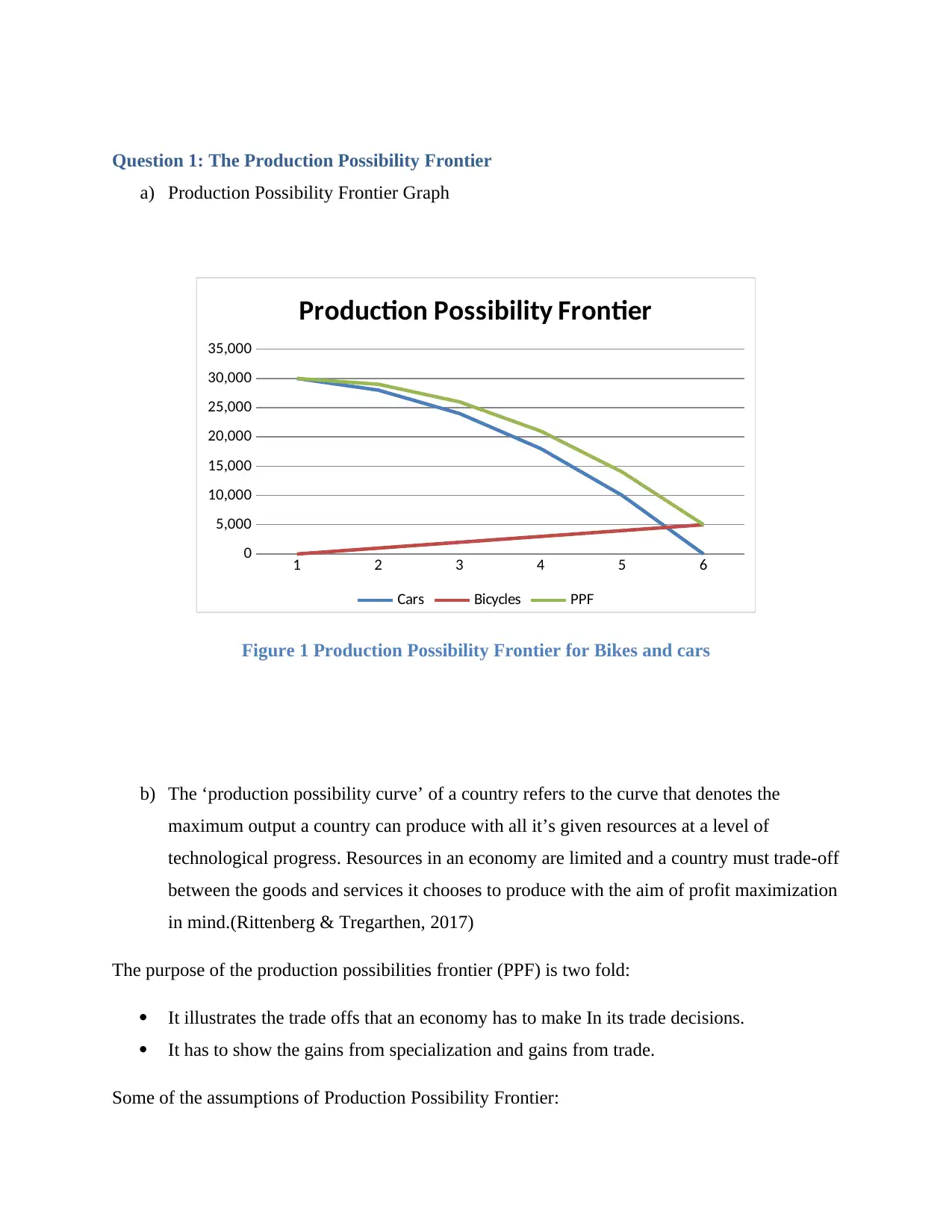
Question 1: The Production Possibility Frontier
a) Production Possibility Frontier Graph
1 2 3 4 5 6
0
5,000
10,000
15,000
20,000
25,000
30,000
35,000
Production Possibility Frontier
Cars Bicycles PPF
Figure 1 Production Possibility Frontier for Bikes and cars
b) The ‘production possibility curve’ of a country refers to the curve that denotes the
maximum output a country can produce with all it’s given resources at a level of
technological progress. Resources in an economy are limited and a country must trade-off
between the goods and services it chooses to produce with the aim of profit maximization
in mind.(Rittenberg & Tregarthen, 2017)
The purpose of the production possibilities frontier (PPF) is two fold:
It illustrates the trade offs that an economy has to make In its trade decisions.
It has to show the gains from specialization and gains from trade.
Some of the assumptions of Production Possibility Frontier:
a) Production Possibility Frontier Graph
1 2 3 4 5 6
0
5,000
10,000
15,000
20,000
25,000
30,000
35,000
Production Possibility Frontier
Cars Bicycles PPF
Figure 1 Production Possibility Frontier for Bikes and cars
b) The ‘production possibility curve’ of a country refers to the curve that denotes the
maximum output a country can produce with all it’s given resources at a level of
technological progress. Resources in an economy are limited and a country must trade-off
between the goods and services it chooses to produce with the aim of profit maximization
in mind.(Rittenberg & Tregarthen, 2017)
The purpose of the production possibilities frontier (PPF) is two fold:
It illustrates the trade offs that an economy has to make In its trade decisions.
It has to show the gains from specialization and gains from trade.
Some of the assumptions of Production Possibility Frontier:
Paraphrase This Document
Need a fresh take? Get an instant paraphrase of this document with our AI Paraphraser
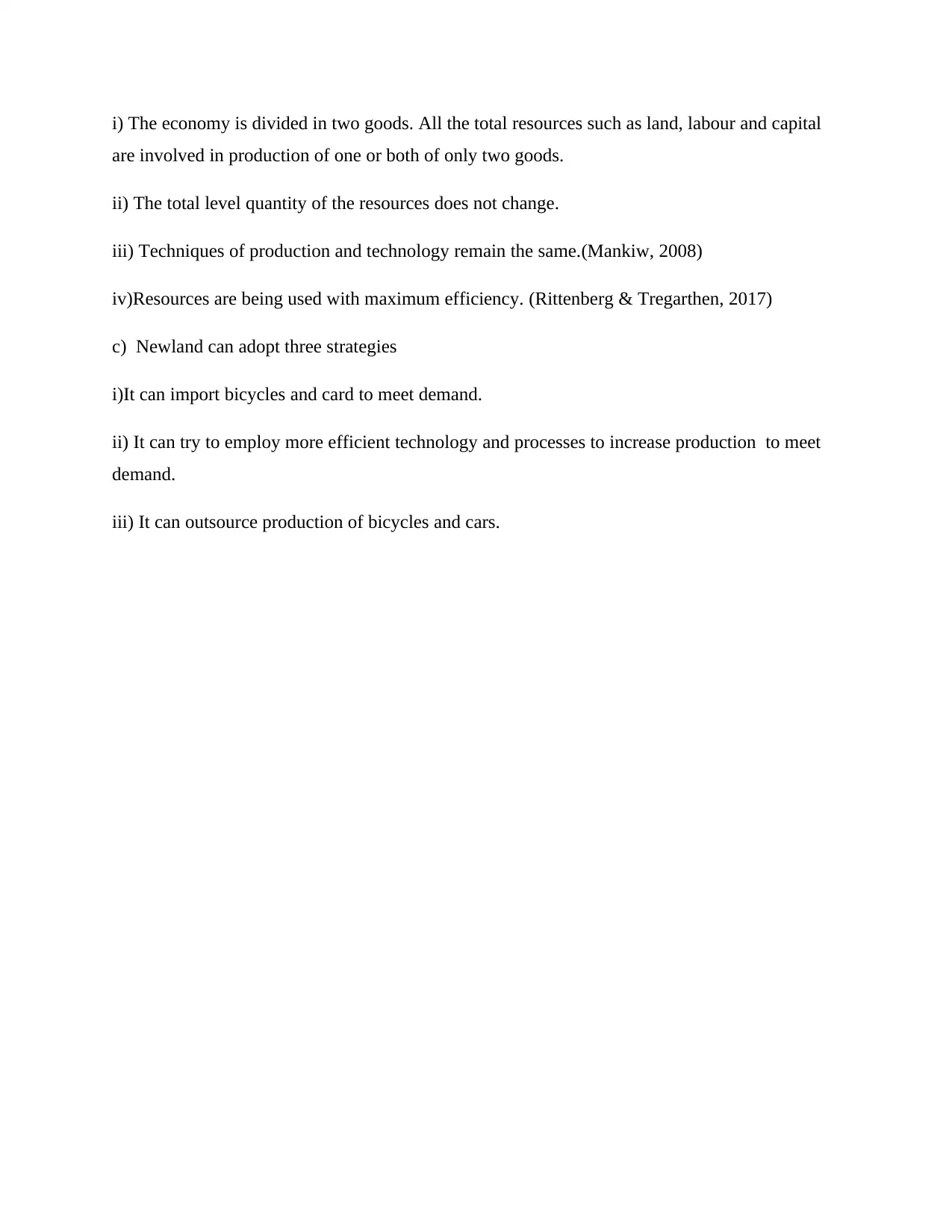
i) The economy is divided in two goods. All the total resources such as land, labour and capital
are involved in production of one or both of only two goods.
ii) The total level quantity of the resources does not change.
iii) Techniques of production and technology remain the same.(Mankiw, 2008)
iv)Resources are being used with maximum efficiency. (Rittenberg & Tregarthen, 2017)
c) Newland can adopt three strategies
i)It can import bicycles and card to meet demand.
ii) It can try to employ more efficient technology and processes to increase production to meet
demand.
iii) It can outsource production of bicycles and cars.
are involved in production of one or both of only two goods.
ii) The total level quantity of the resources does not change.
iii) Techniques of production and technology remain the same.(Mankiw, 2008)
iv)Resources are being used with maximum efficiency. (Rittenberg & Tregarthen, 2017)
c) Newland can adopt three strategies
i)It can import bicycles and card to meet demand.
ii) It can try to employ more efficient technology and processes to increase production to meet
demand.
iii) It can outsource production of bicycles and cars.
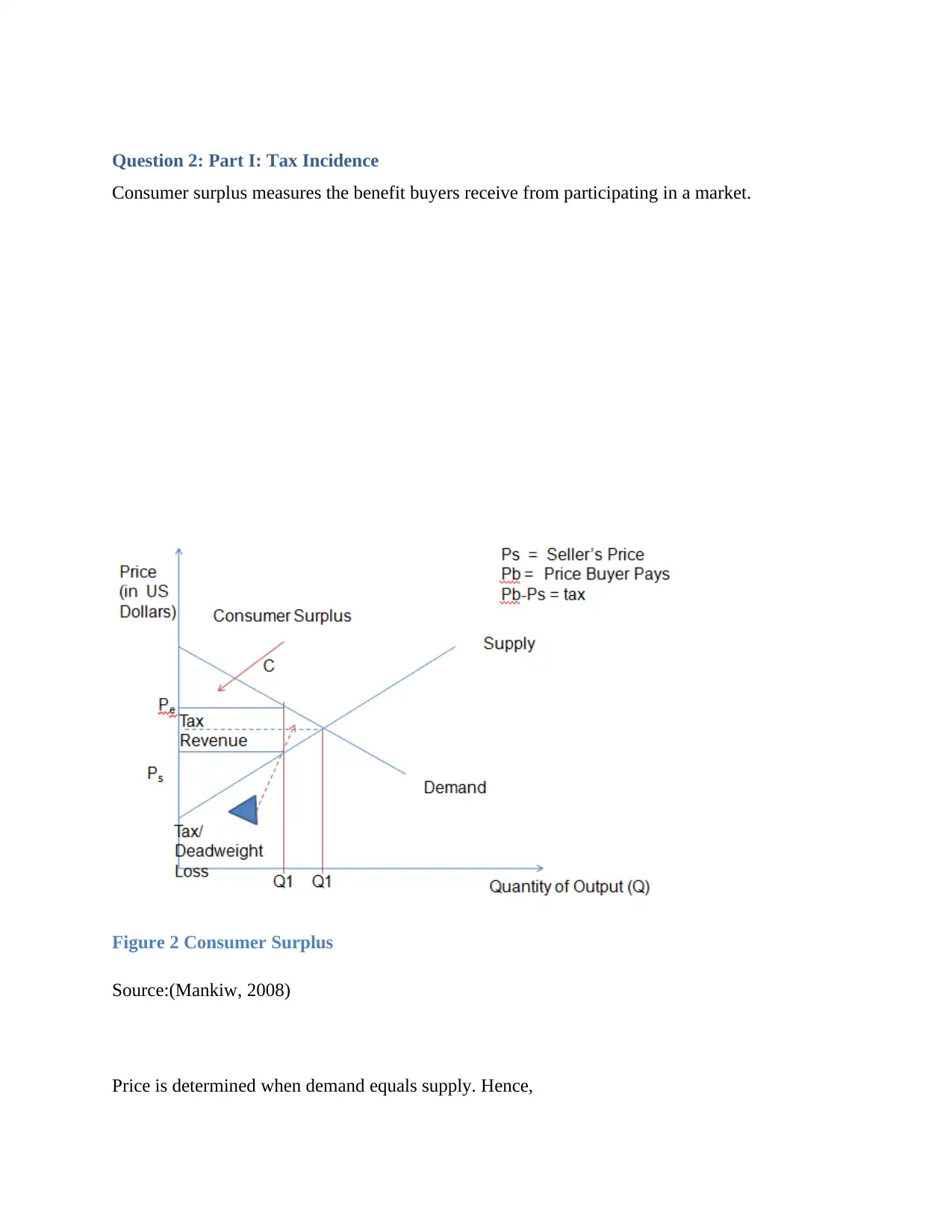
Question 2: Part I: Tax Incidence
Consumer surplus measures the benefit buyers receive from participating in a market.
Figure 2 Consumer Surplus
Source:(Mankiw, 2008)
Price is determined when demand equals supply. Hence,
Consumer surplus measures the benefit buyers receive from participating in a market.
Figure 2 Consumer Surplus
Source:(Mankiw, 2008)
Price is determined when demand equals supply. Hence,
⊘ This is a preview!⊘
Do you want full access?
Subscribe today to unlock all pages.

Trusted by 1+ million students worldwide
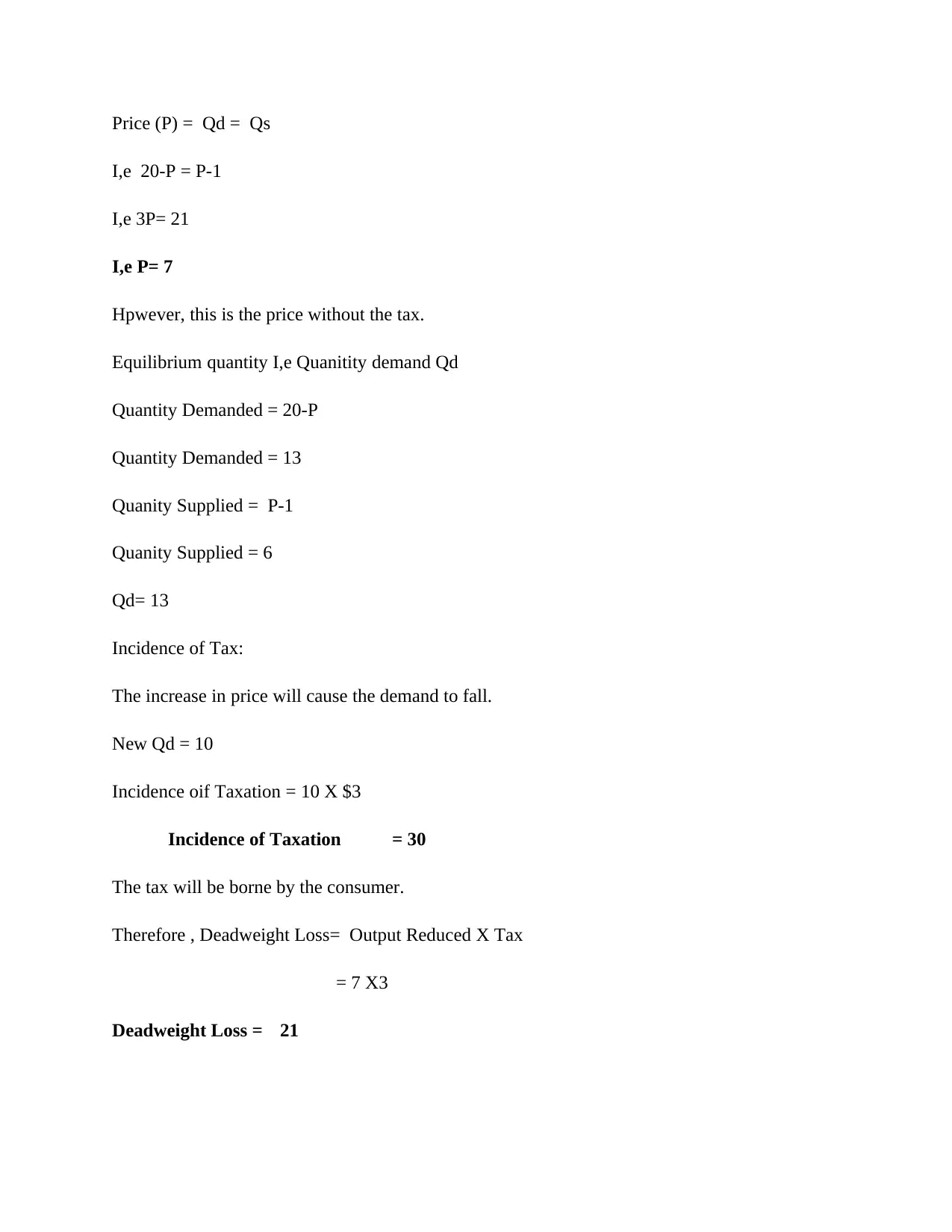
Price (P) = Qd = Qs
I,e 20-P = P-1
I,e 3P= 21
I,e P= 7
Hpwever, this is the price without the tax.
Equilibrium quantity I,e Quanitity demand Qd
Quantity Demanded = 20-P
Quantity Demanded = 13
Quanity Supplied = P-1
Quanity Supplied = 6
Qd= 13
Incidence of Tax:
The increase in price will cause the demand to fall.
New Qd = 10
Incidence oif Taxation = 10 X $3
Incidence of Taxation = 30
The tax will be borne by the consumer.
Therefore , Deadweight Loss= Output Reduced X Tax
= 7 X3
Deadweight Loss = 21
I,e 20-P = P-1
I,e 3P= 21
I,e P= 7
Hpwever, this is the price without the tax.
Equilibrium quantity I,e Quanitity demand Qd
Quantity Demanded = 20-P
Quantity Demanded = 13
Quanity Supplied = P-1
Quanity Supplied = 6
Qd= 13
Incidence of Tax:
The increase in price will cause the demand to fall.
New Qd = 10
Incidence oif Taxation = 10 X $3
Incidence of Taxation = 30
The tax will be borne by the consumer.
Therefore , Deadweight Loss= Output Reduced X Tax
= 7 X3
Deadweight Loss = 21
Paraphrase This Document
Need a fresh take? Get an instant paraphrase of this document with our AI Paraphraser
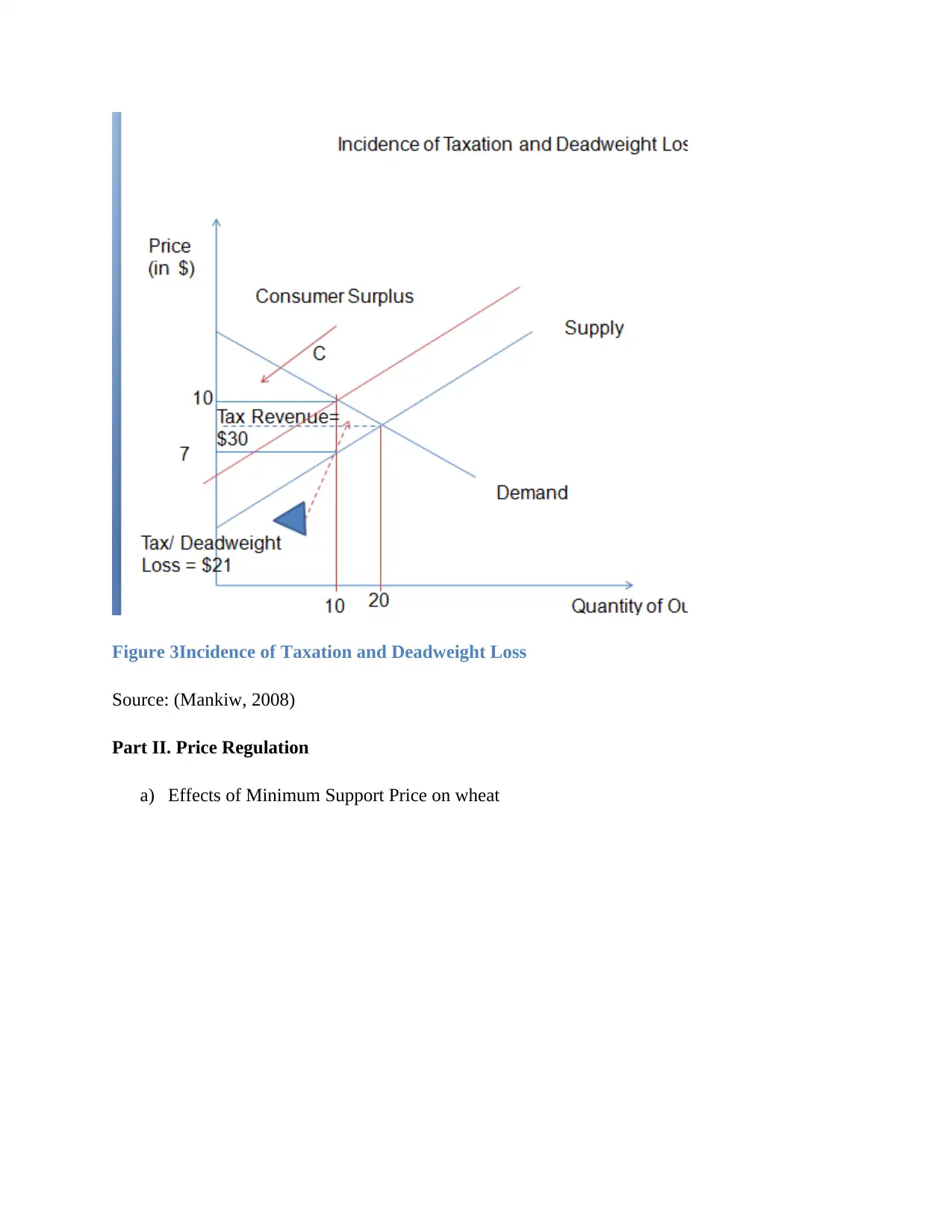
Figure 3Incidence of Taxation and Deadweight Loss
Source: (Mankiw, 2008)
Part II. Price Regulation
a) Effects of Minimum Support Price on wheat
Source: (Mankiw, 2008)
Part II. Price Regulation
a) Effects of Minimum Support Price on wheat
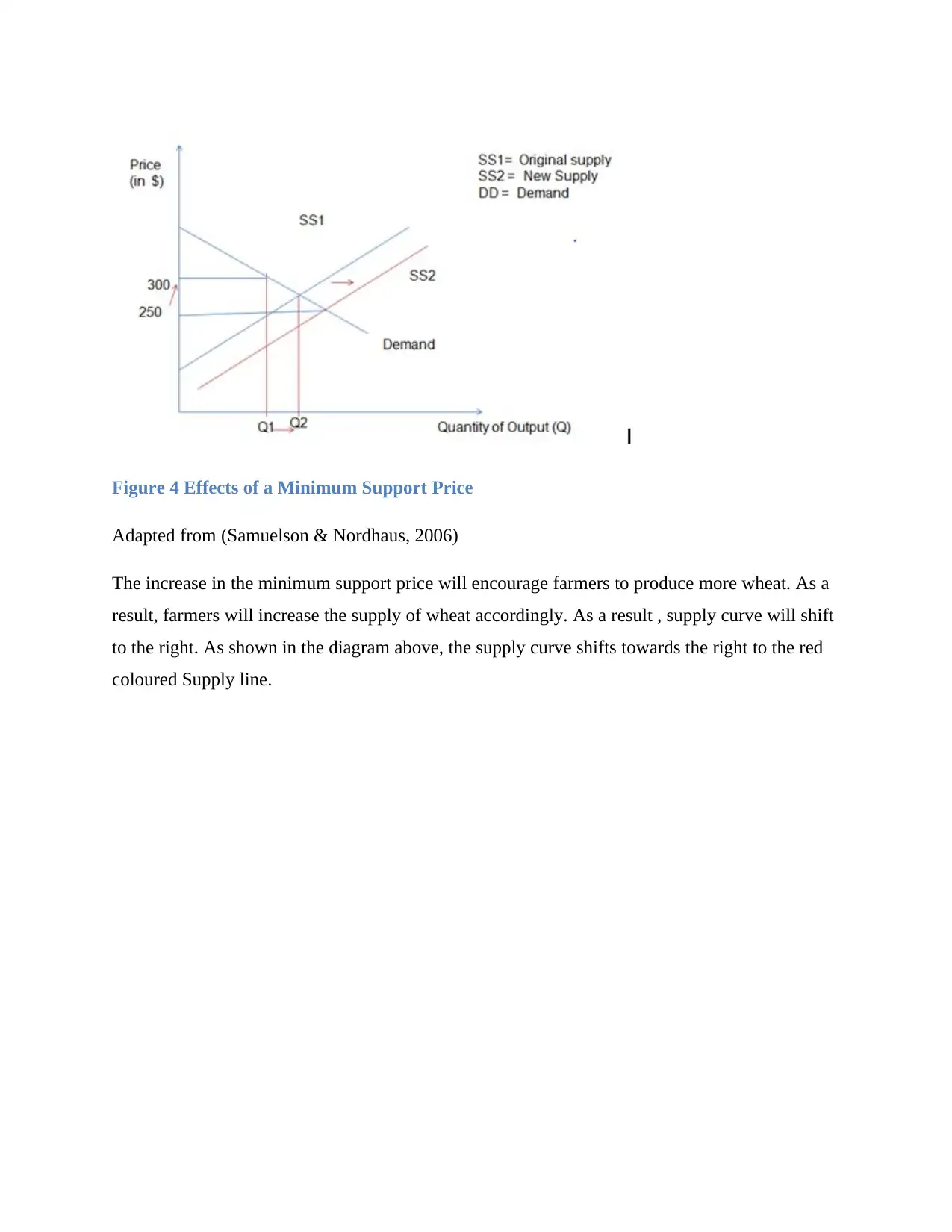
Figure 4 Effects of a Minimum Support Price
Adapted from (Samuelson & Nordhaus, 2006)
The increase in the minimum support price will encourage farmers to produce more wheat. As a
result, farmers will increase the supply of wheat accordingly. As a result , supply curve will shift
to the right. As shown in the diagram above, the supply curve shifts towards the right to the red
coloured Supply line.
Adapted from (Samuelson & Nordhaus, 2006)
The increase in the minimum support price will encourage farmers to produce more wheat. As a
result, farmers will increase the supply of wheat accordingly. As a result , supply curve will shift
to the right. As shown in the diagram above, the supply curve shifts towards the right to the red
coloured Supply line.
⊘ This is a preview!⊘
Do you want full access?
Subscribe today to unlock all pages.

Trusted by 1+ million students worldwide
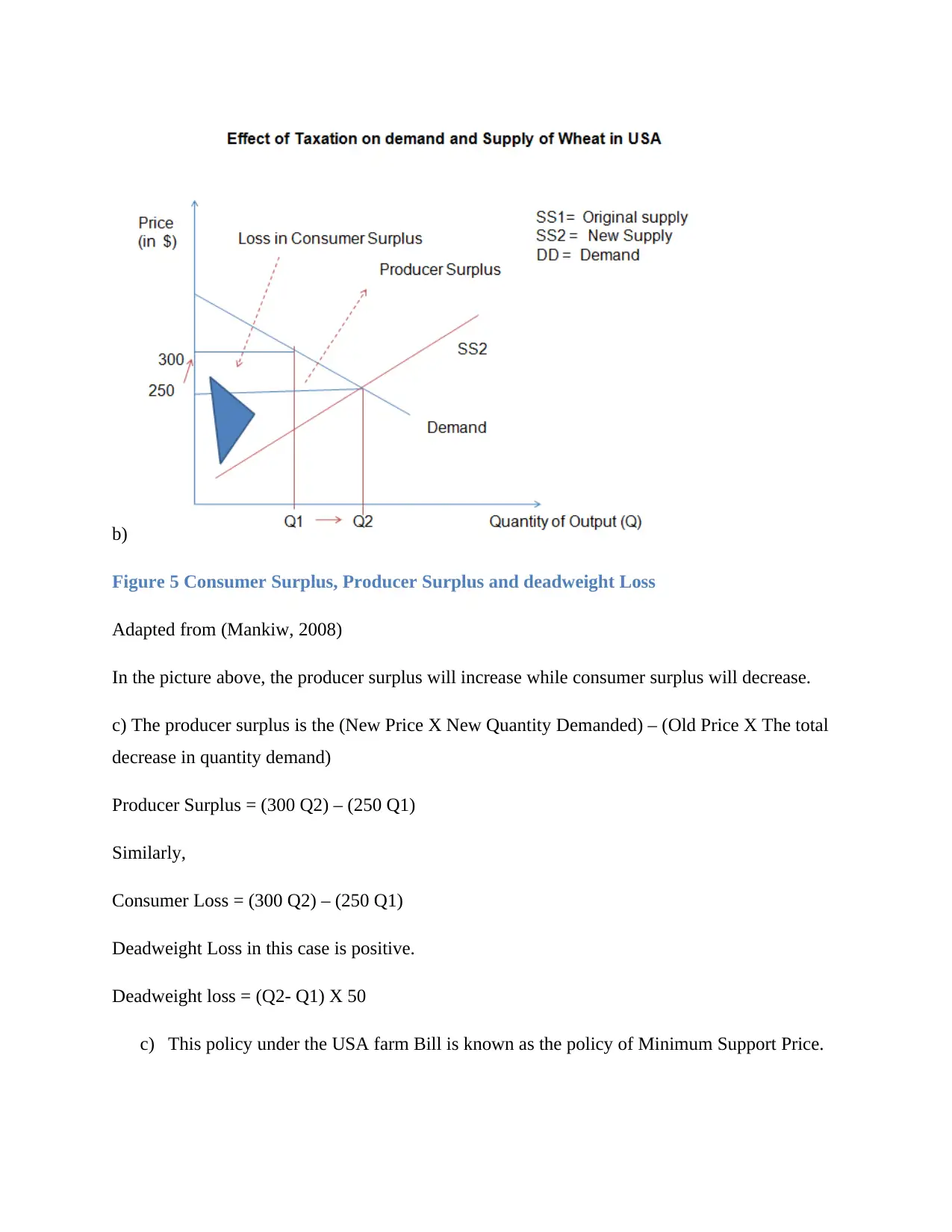
b)
Figure 5 Consumer Surplus, Producer Surplus and deadweight Loss
Adapted from (Mankiw, 2008)
In the picture above, the producer surplus will increase while consumer surplus will decrease.
c) The producer surplus is the (New Price X New Quantity Demanded) – (Old Price X The total
decrease in quantity demand)
Producer Surplus = (300 Q2) – (250 Q1)
Similarly,
Consumer Loss = (300 Q2) – (250 Q1)
Deadweight Loss in this case is positive.
Deadweight loss = (Q2- Q1) X 50
c) This policy under the USA farm Bill is known as the policy of Minimum Support Price.
Figure 5 Consumer Surplus, Producer Surplus and deadweight Loss
Adapted from (Mankiw, 2008)
In the picture above, the producer surplus will increase while consumer surplus will decrease.
c) The producer surplus is the (New Price X New Quantity Demanded) – (Old Price X The total
decrease in quantity demand)
Producer Surplus = (300 Q2) – (250 Q1)
Similarly,
Consumer Loss = (300 Q2) – (250 Q1)
Deadweight Loss in this case is positive.
Deadweight loss = (Q2- Q1) X 50
c) This policy under the USA farm Bill is known as the policy of Minimum Support Price.
Paraphrase This Document
Need a fresh take? Get an instant paraphrase of this document with our AI Paraphraser
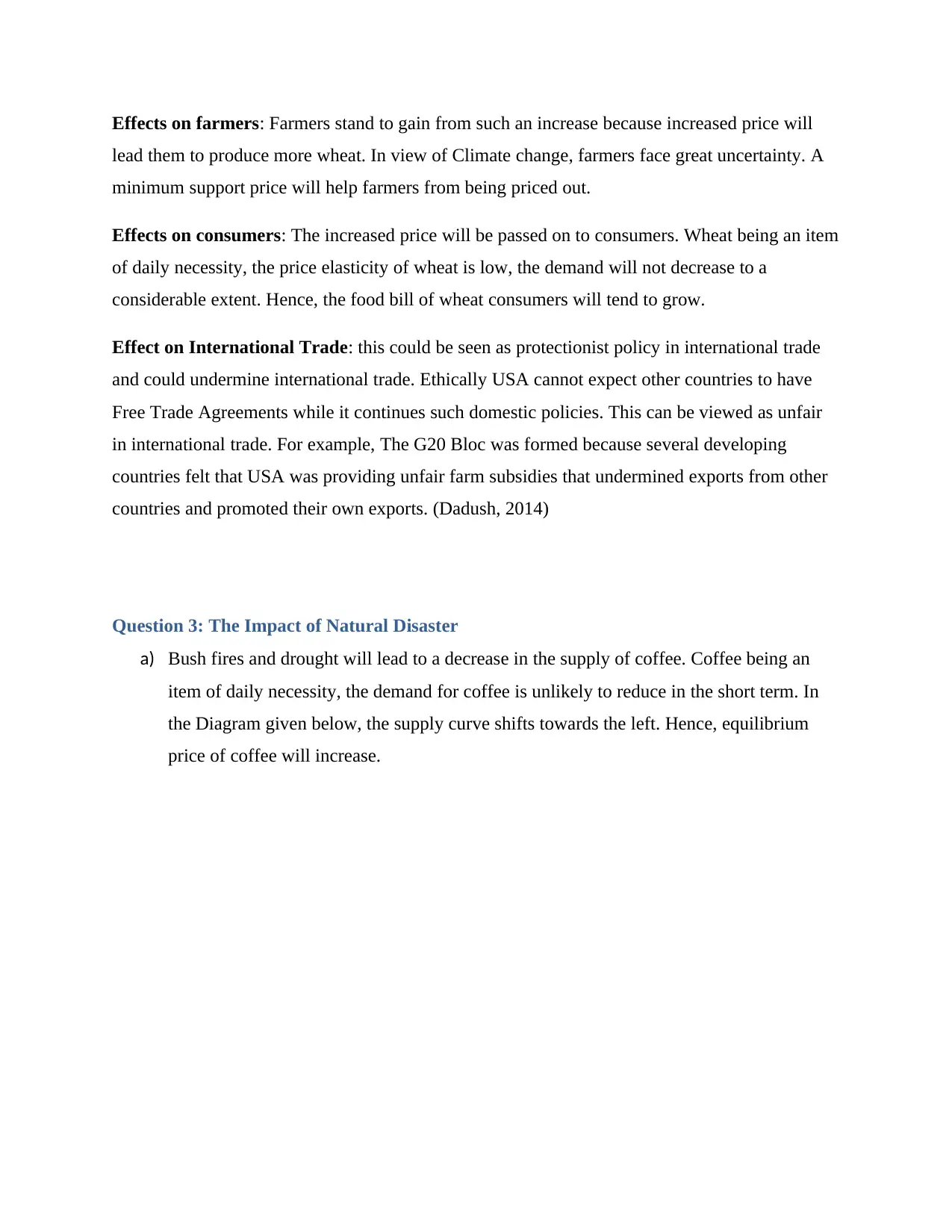
Effects on farmers: Farmers stand to gain from such an increase because increased price will
lead them to produce more wheat. In view of Climate change, farmers face great uncertainty. A
minimum support price will help farmers from being priced out.
Effects on consumers: The increased price will be passed on to consumers. Wheat being an item
of daily necessity, the price elasticity of wheat is low, the demand will not decrease to a
considerable extent. Hence, the food bill of wheat consumers will tend to grow.
Effect on International Trade: this could be seen as protectionist policy in international trade
and could undermine international trade. Ethically USA cannot expect other countries to have
Free Trade Agreements while it continues such domestic policies. This can be viewed as unfair
in international trade. For example, The G20 Bloc was formed because several developing
countries felt that USA was providing unfair farm subsidies that undermined exports from other
countries and promoted their own exports. (Dadush, 2014)
Question 3: The Impact of Natural Disaster
a) Bush fires and drought will lead to a decrease in the supply of coffee. Coffee being an
item of daily necessity, the demand for coffee is unlikely to reduce in the short term. In
the Diagram given below, the supply curve shifts towards the left. Hence, equilibrium
price of coffee will increase.
lead them to produce more wheat. In view of Climate change, farmers face great uncertainty. A
minimum support price will help farmers from being priced out.
Effects on consumers: The increased price will be passed on to consumers. Wheat being an item
of daily necessity, the price elasticity of wheat is low, the demand will not decrease to a
considerable extent. Hence, the food bill of wheat consumers will tend to grow.
Effect on International Trade: this could be seen as protectionist policy in international trade
and could undermine international trade. Ethically USA cannot expect other countries to have
Free Trade Agreements while it continues such domestic policies. This can be viewed as unfair
in international trade. For example, The G20 Bloc was formed because several developing
countries felt that USA was providing unfair farm subsidies that undermined exports from other
countries and promoted their own exports. (Dadush, 2014)
Question 3: The Impact of Natural Disaster
a) Bush fires and drought will lead to a decrease in the supply of coffee. Coffee being an
item of daily necessity, the demand for coffee is unlikely to reduce in the short term. In
the Diagram given below, the supply curve shifts towards the left. Hence, equilibrium
price of coffee will increase.
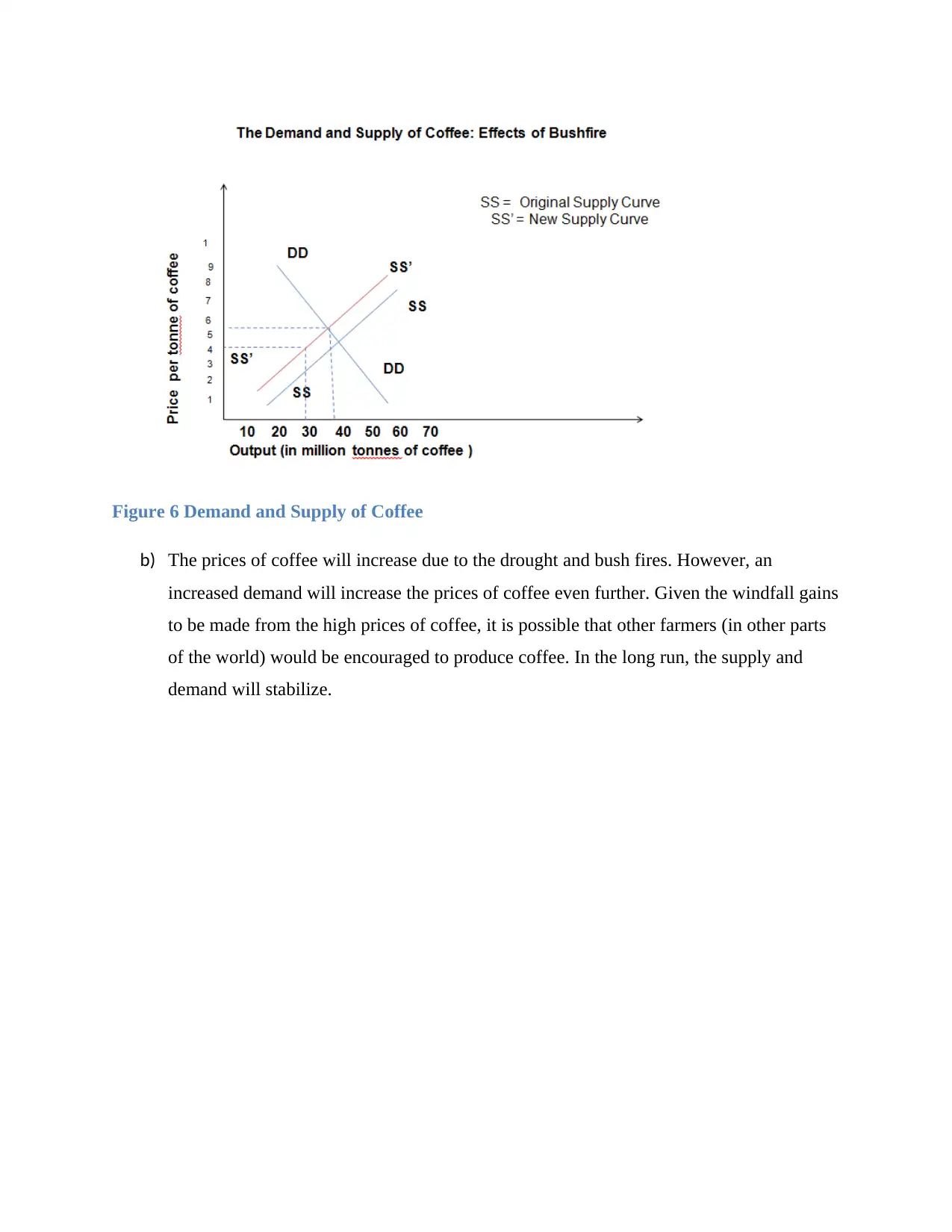
Figure 6 Demand and Supply of Coffee
b) The prices of coffee will increase due to the drought and bush fires. However, an
increased demand will increase the prices of coffee even further. Given the windfall gains
to be made from the high prices of coffee, it is possible that other farmers (in other parts
of the world) would be encouraged to produce coffee. In the long run, the supply and
demand will stabilize.
b) The prices of coffee will increase due to the drought and bush fires. However, an
increased demand will increase the prices of coffee even further. Given the windfall gains
to be made from the high prices of coffee, it is possible that other farmers (in other parts
of the world) would be encouraged to produce coffee. In the long run, the supply and
demand will stabilize.
⊘ This is a preview!⊘
Do you want full access?
Subscribe today to unlock all pages.

Trusted by 1+ million students worldwide
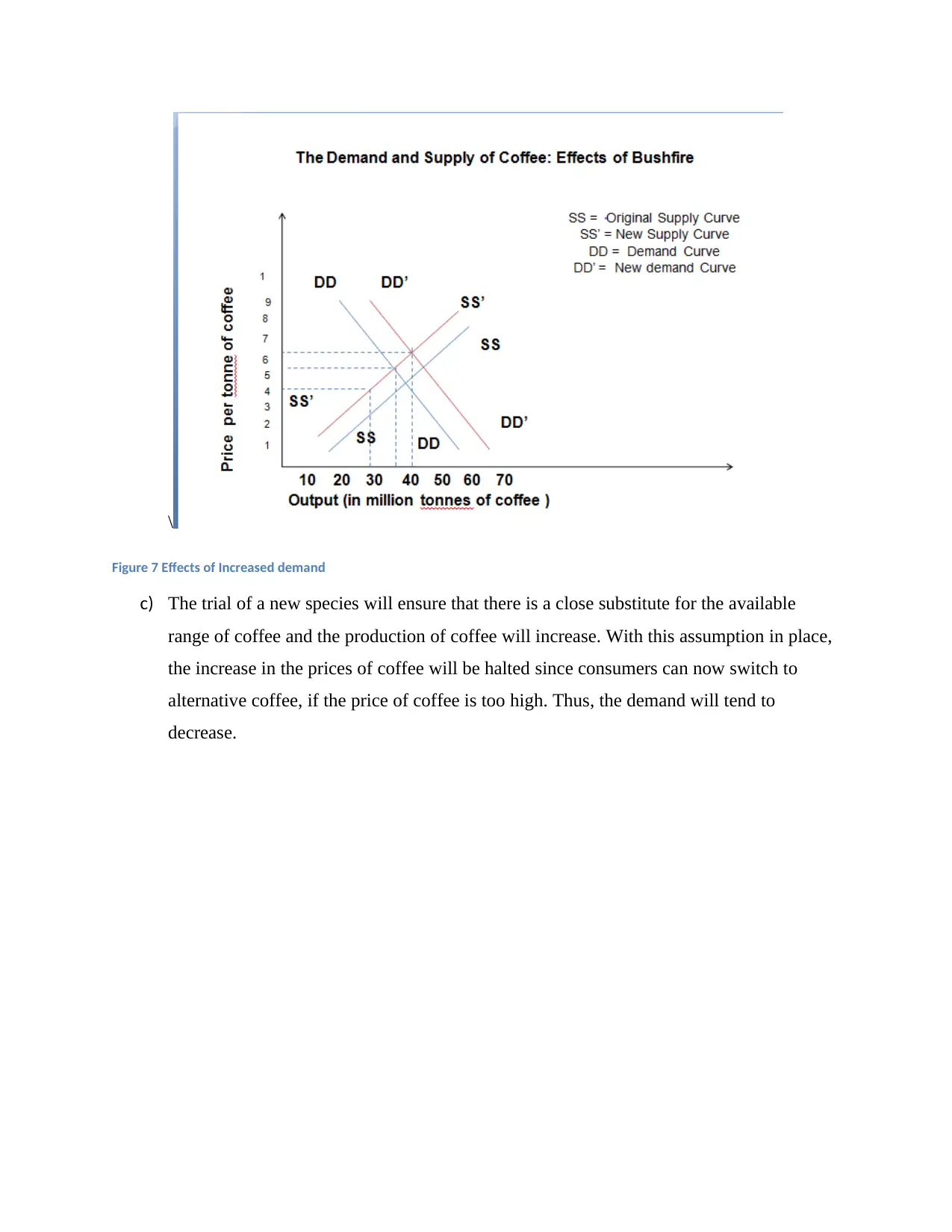
\
Figure 7 Effects of Increased demand
c) The trial of a new species will ensure that there is a close substitute for the available
range of coffee and the production of coffee will increase. With this assumption in place,
the increase in the prices of coffee will be halted since consumers can now switch to
alternative coffee, if the price of coffee is too high. Thus, the demand will tend to
decrease.
Figure 7 Effects of Increased demand
c) The trial of a new species will ensure that there is a close substitute for the available
range of coffee and the production of coffee will increase. With this assumption in place,
the increase in the prices of coffee will be halted since consumers can now switch to
alternative coffee, if the price of coffee is too high. Thus, the demand will tend to
decrease.
Paraphrase This Document
Need a fresh take? Get an instant paraphrase of this document with our AI Paraphraser
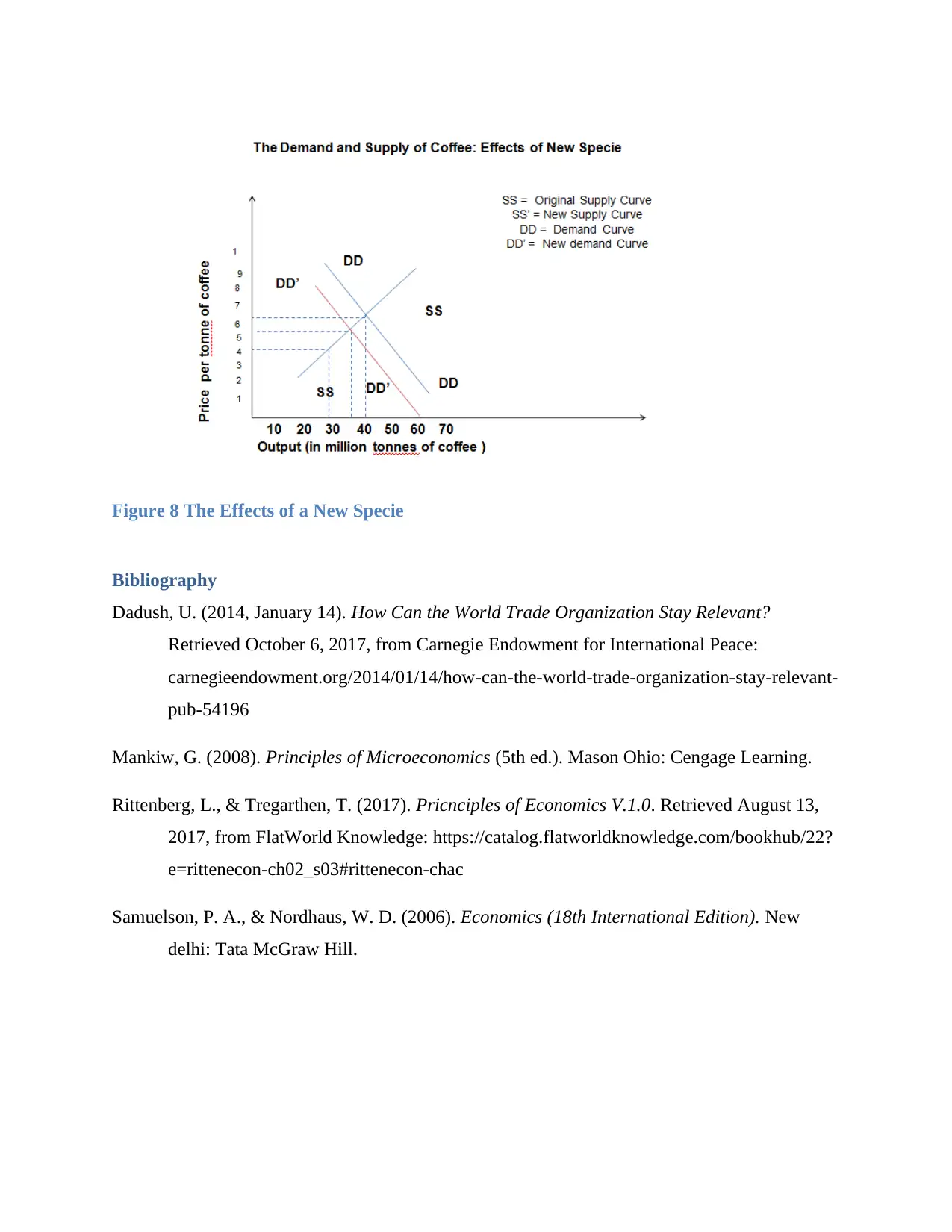
Figure 8 The Effects of a New Specie
Bibliography
Dadush, U. (2014, January 14). How Can the World Trade Organization Stay Relevant?
Retrieved October 6, 2017, from Carnegie Endowment for International Peace:
carnegieendowment.org/2014/01/14/how-can-the-world-trade-organization-stay-relevant-
pub-54196
Mankiw, G. (2008). Principles of Microeconomics (5th ed.). Mason Ohio: Cengage Learning.
Rittenberg, L., & Tregarthen, T. (2017). Pricnciples of Economics V.1.0. Retrieved August 13,
2017, from FlatWorld Knowledge: https://catalog.flatworldknowledge.com/bookhub/22?
e=rittenecon-ch02_s03#rittenecon-chac
Samuelson, P. A., & Nordhaus, W. D. (2006). Economics (18th International Edition). New
delhi: Tata McGraw Hill.
Bibliography
Dadush, U. (2014, January 14). How Can the World Trade Organization Stay Relevant?
Retrieved October 6, 2017, from Carnegie Endowment for International Peace:
carnegieendowment.org/2014/01/14/how-can-the-world-trade-organization-stay-relevant-
pub-54196
Mankiw, G. (2008). Principles of Microeconomics (5th ed.). Mason Ohio: Cengage Learning.
Rittenberg, L., & Tregarthen, T. (2017). Pricnciples of Economics V.1.0. Retrieved August 13,
2017, from FlatWorld Knowledge: https://catalog.flatworldknowledge.com/bookhub/22?
e=rittenecon-ch02_s03#rittenecon-chac
Samuelson, P. A., & Nordhaus, W. D. (2006). Economics (18th International Edition). New
delhi: Tata McGraw Hill.
1 out of 11
Related Documents
Your All-in-One AI-Powered Toolkit for Academic Success.
+13062052269
info@desklib.com
Available 24*7 on WhatsApp / Email
![[object Object]](/_next/static/media/star-bottom.7253800d.svg)
Unlock your academic potential
Copyright © 2020–2025 A2Z Services. All Rights Reserved. Developed and managed by ZUCOL.





